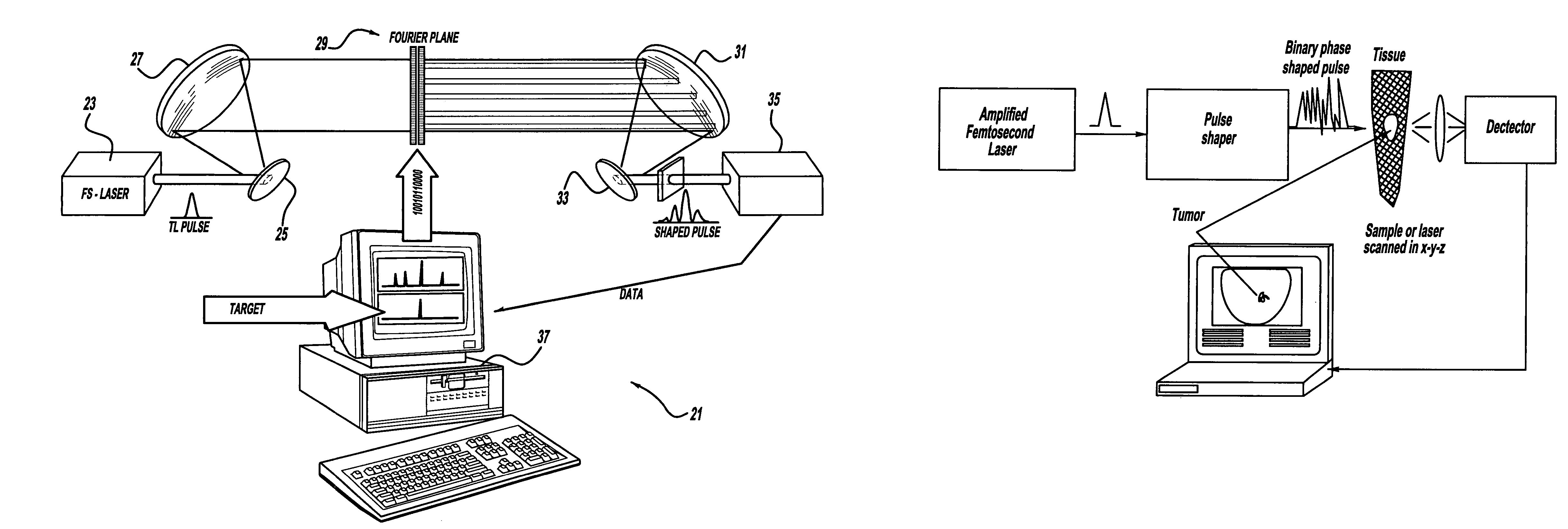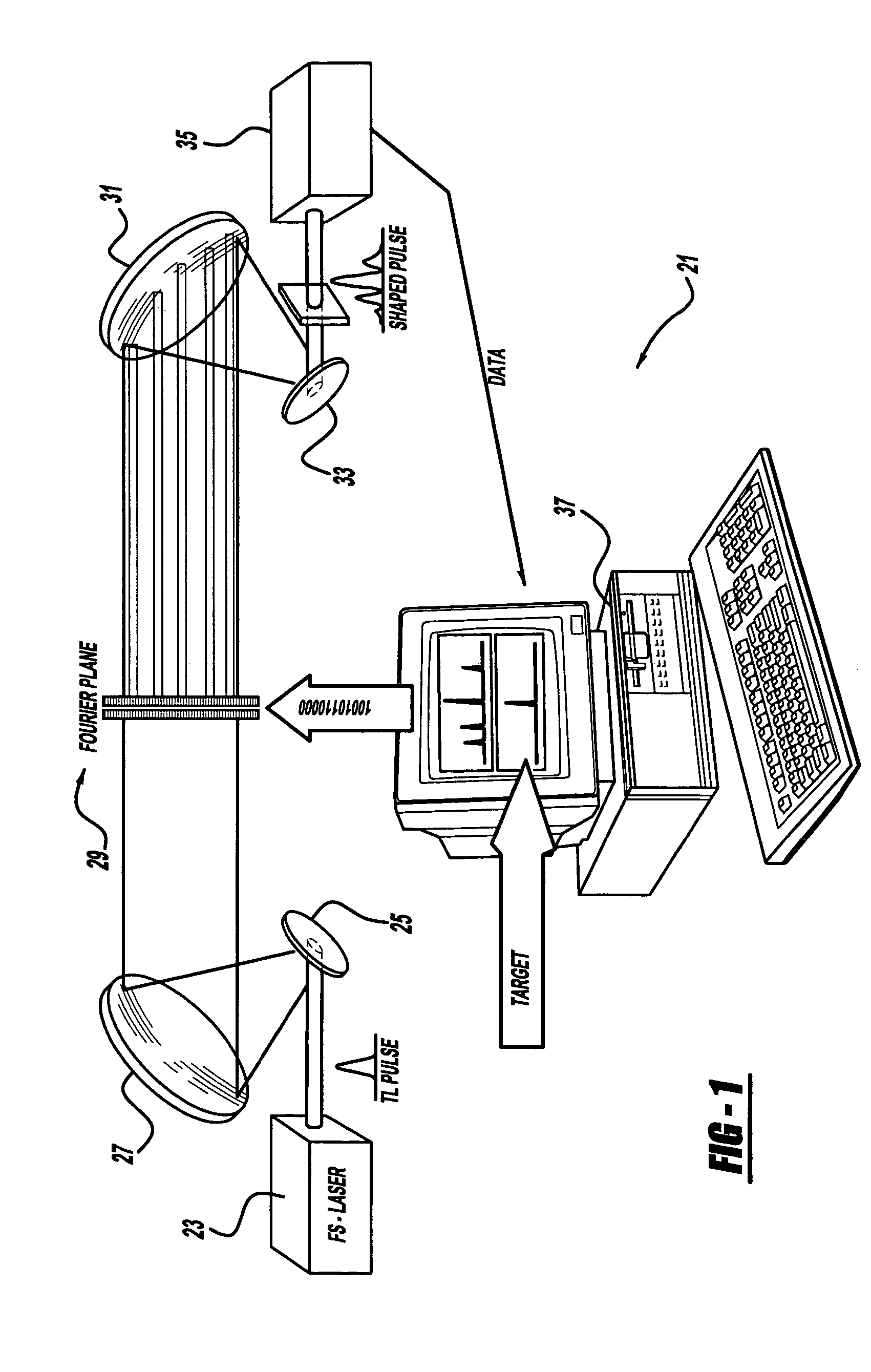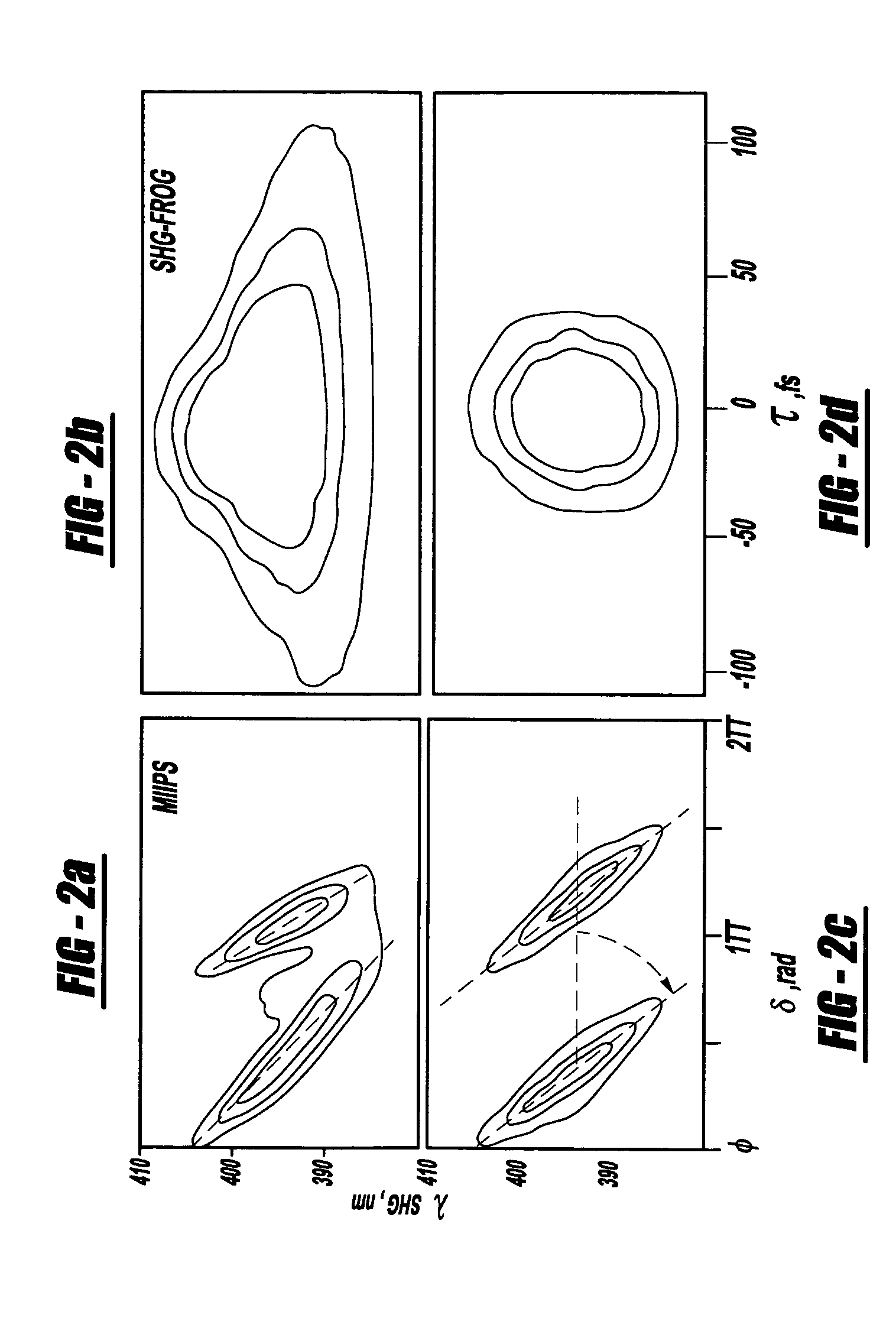Laser system using ultra-short laser pulses
- Summary
- Abstract
- Description
- Claims
- Application Information
AI Technical Summary
Benefits of technology
Problems solved by technology
Method used
Image
Examples
Embodiment Construction
[0035]The following description of the preferred embodiments is merely exemplary in nature and is in no way intended to limit the invention, its application, or uses.
[0036]The present invention provides methods and apparatus for a laser system using ultra short pulses. Pulse shaping essentially involves control over the amplitude, phase, frequency and / or inter-pulse separation. Complex pulse shaping aims to control one or more of the above-mentioned parameters in a programmable manner, such that the user has complete control. In other words, complex pulse shaping allows generation of complicated ultrafast optical waveforms according to user specification.
[0037]Coherent control is the ability to control the dynamics at various stages of a process as it evolves under the effect of a coherent source. Many of the frequencies constituting the ultrafast pulse can simultaneously excite many coherent transitions to the excited states, and a capability to manipulate them with the shaped puls...
PUM
 Login to view more
Login to view more Abstract
Description
Claims
Application Information
 Login to view more
Login to view more - R&D Engineer
- R&D Manager
- IP Professional
- Industry Leading Data Capabilities
- Powerful AI technology
- Patent DNA Extraction
Browse by: Latest US Patents, China's latest patents, Technical Efficacy Thesaurus, Application Domain, Technology Topic.
© 2024 PatSnap. All rights reserved.Legal|Privacy policy|Modern Slavery Act Transparency Statement|Sitemap



